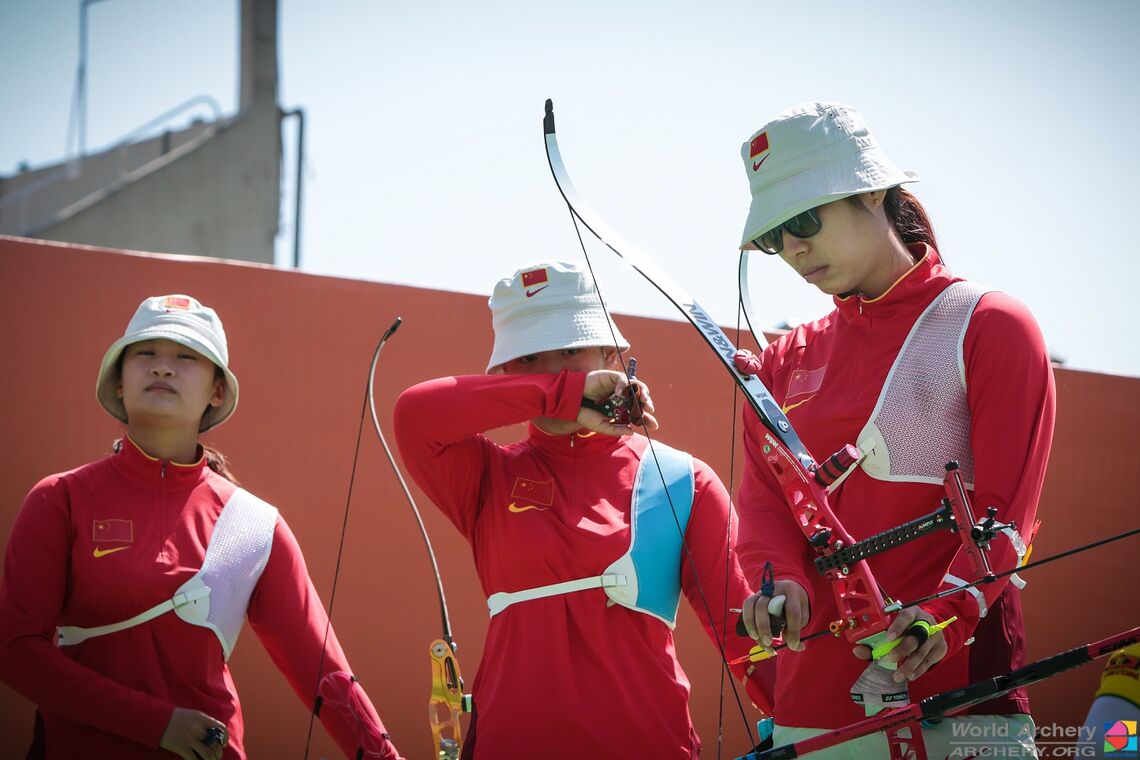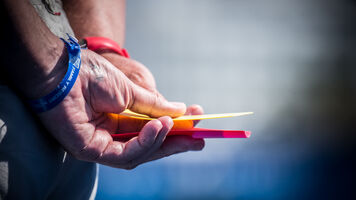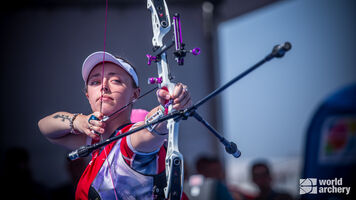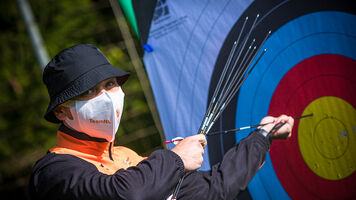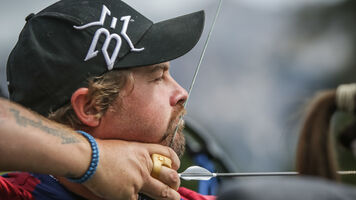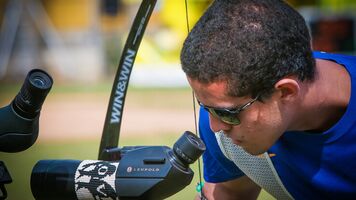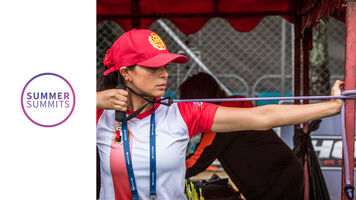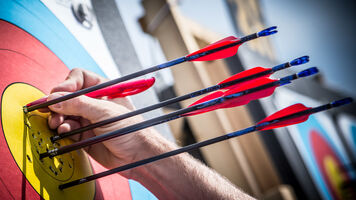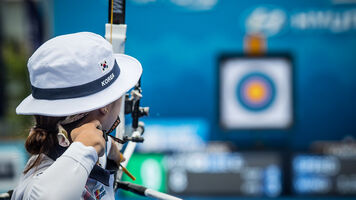6 teams: Who shoots opener, middle and anchor?
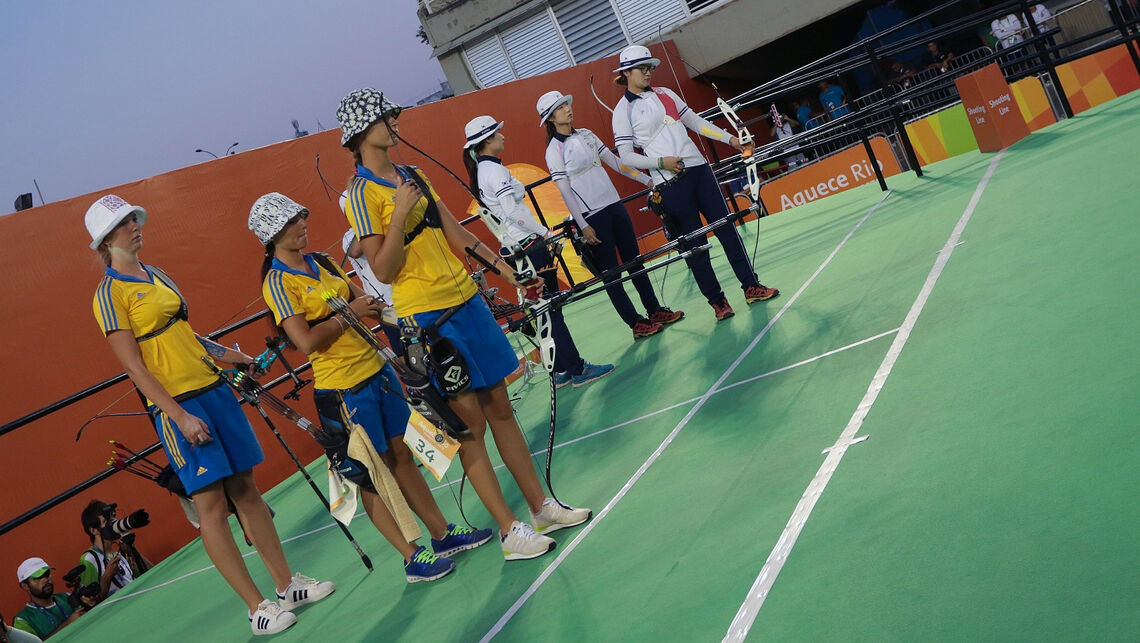
The rotation of the three athletes in the team adds an element of strategy. On the finals field, the teams shoot the sets of six arrows in series of three.
One team shoots three arrows, then the other, and then back to the first – then the second to complete the set.
So, there are three positions each athlete can take in the team’s rotation.
Position 1. Opener: Sets the tone for the rest of the team with the first arrow. Something big can set momentum, a bad arrow can be tough to come back from.
Position 2. Middle: Heart of the team. Up second, often the most consistent and sometimes the weakest – as their arrow is buffered by the results of the first and last in the rotation. A good middle archer can make the difference in crucial moments, much like the footballer that gets credited for goal assists.
Position 3. Anchor: The one to win (or lose) the set. Will always have a total to hit with the sixth and last arrow of any six-arrow set, even if that total is unreachable. Archers in the anchor position are often those with the best shoot-off records.
During recurve women’s team eliminations and finals at the Aquece Rio Olympic test event, we spoke to six teams to find out how they shot the team round – and why they choose the rotation they use.
India 
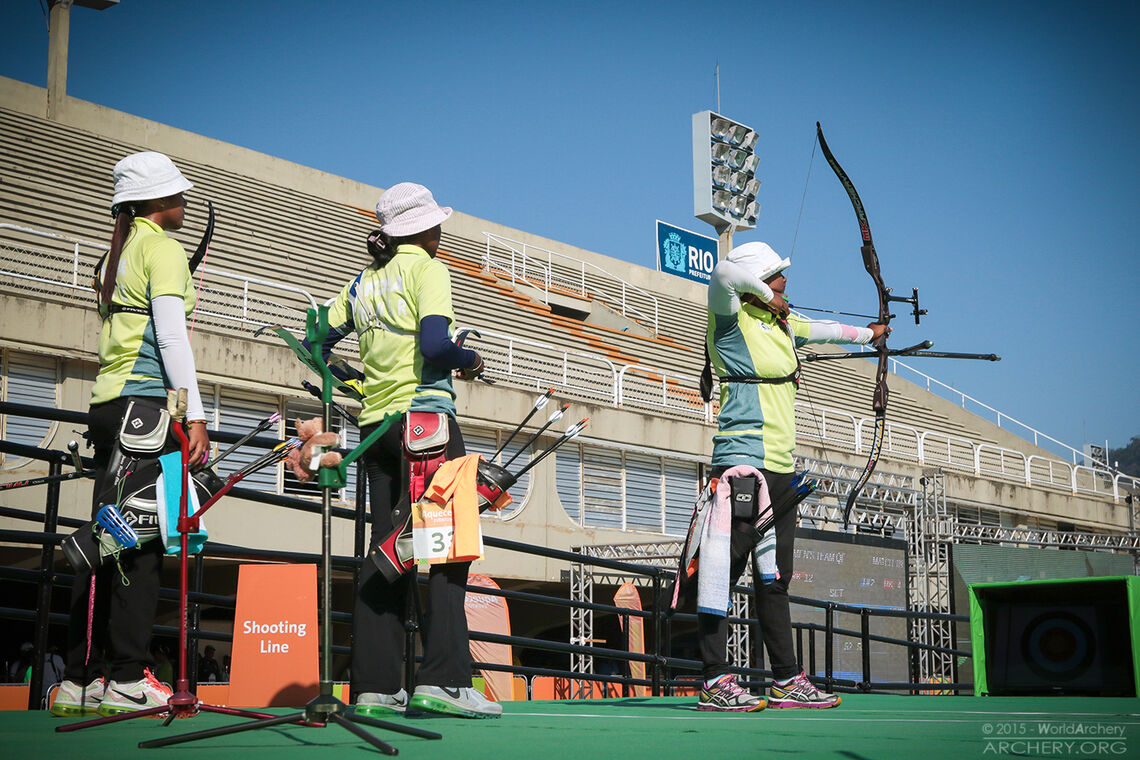
One of the teams that switches between the first and second sets of three arrows, India both begins and finishes a team event set with three-time Archery World Cup silver medallist Deepika Kumari.
“Deepika is more confident in the last position. She’s good at having no time left, but also having it. She can easily relax, think clearly – and basically, she likes it,” explained Rimil Buriuly.
The full Indian order: Kumari, Buriuly, Laxmirani Majhi, then – backwards – Majhi, Buriuly and Kumari.
Chinese Taipei 
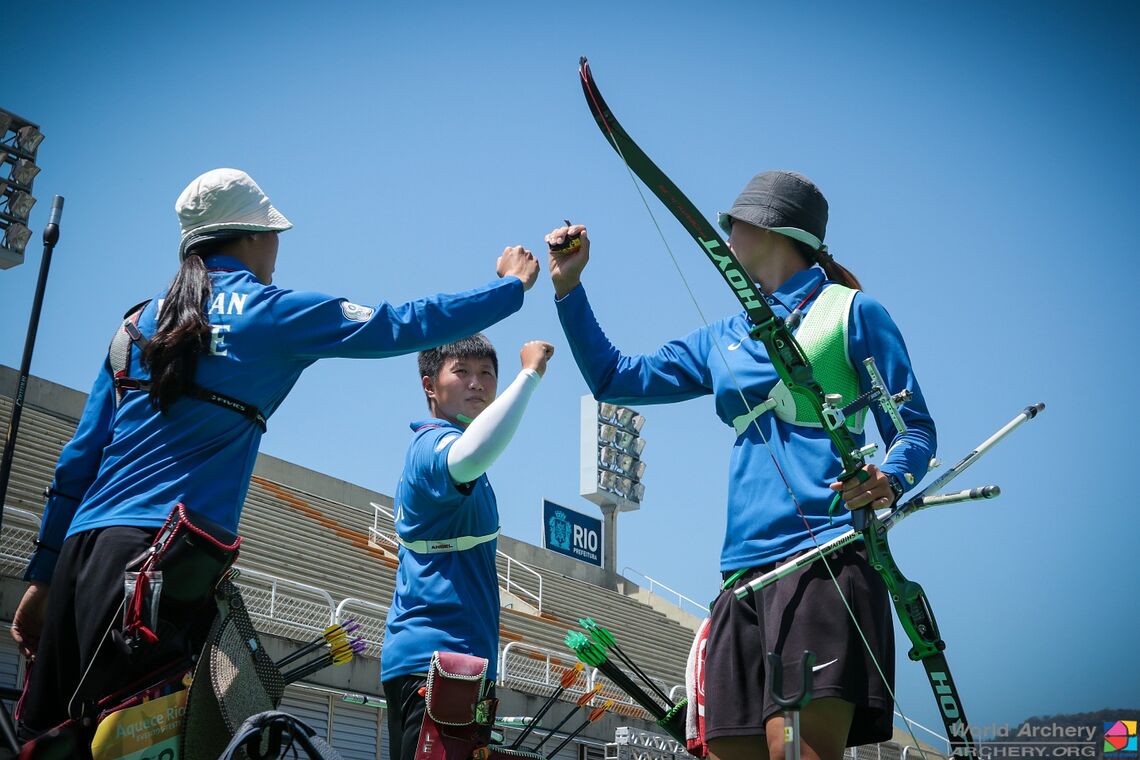
“Le Chien-Ying is usually the third. She has more experience and knows better how to perform under pressure. Tan Ya-Ting is the first because she has a fast heartbeat,” said one of the Chinese Taipei team staff. “She needs to shoot fast to relax.”
Lin Shih-Chia slots in second, the team explained, because she brings stability. At 22 years old, she’s older than Ya-Ting (21) and more experienced than 25-year-old Chien-Ying, having shot internationally since ’08.
“She brings some calm to the team.”
Korea 
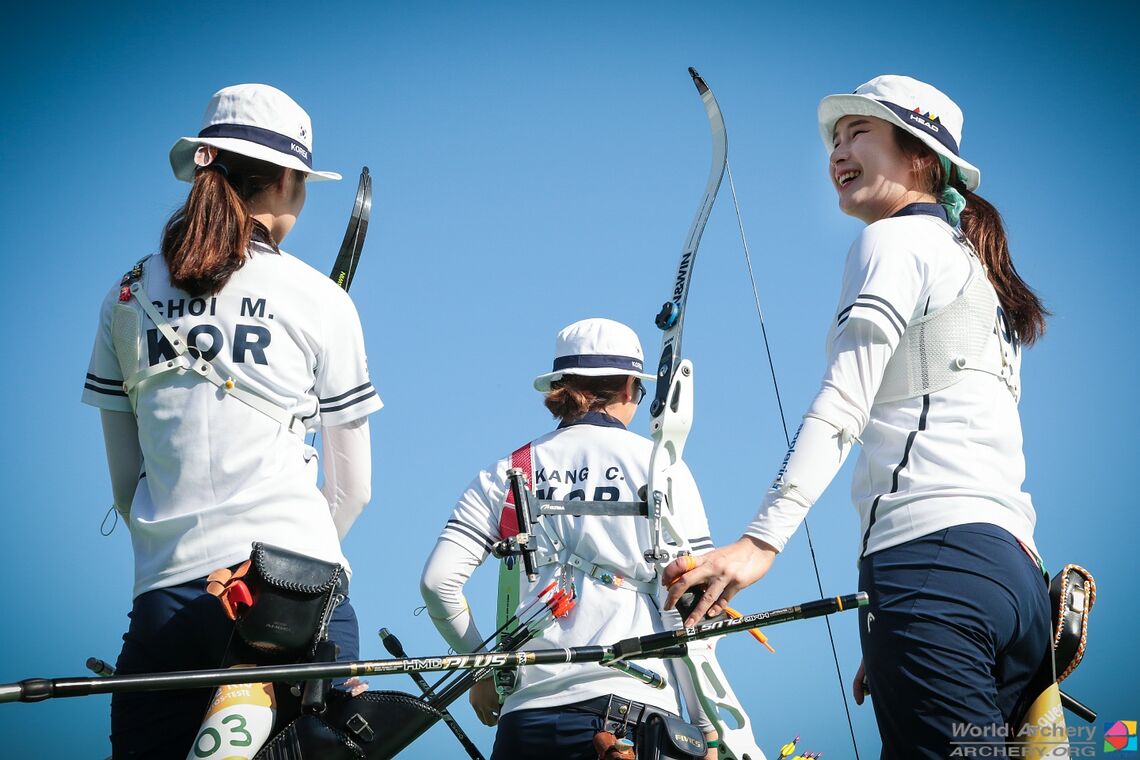
Olympic Champion Ki Bo Bae missed the 10 just once – still hitting nine – in the Korean recurve women’s team’s straight-set win over Ukraine in the Aquece Rio International Archery Challenge Final.
“The third is very important for us,” explained the Korean team staff. “Ki has more experience and can be the leader. She knows how to shoot last, even in moments of tension.”
Seventeen-year-old Kang Chae Young opens the rotation, then Choi Misun strides up second.
“Choi stays very calm when shooting, that’s why she’s second.”
Russia 
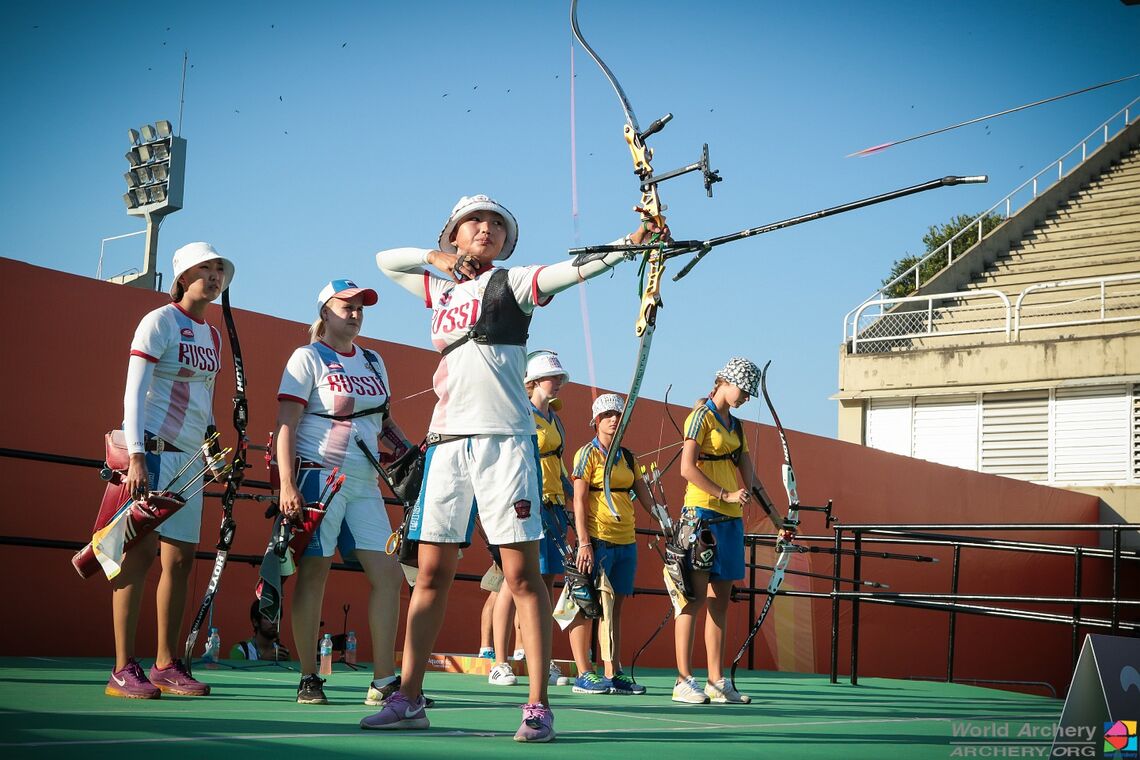
“The order is Dashidorzhieva, Perova then Stepanova. The first one is inexperienced, so she should go first. Then is Perova, the most experienced and strongest. Then comes Stepanova, who shoots very fast, particularly in the wind. That’s the combination that has given them results so far, but they are still trying different things,” revealed the Russian staff.
It was this trio of Russian women – using this rotation – that took gold at the Copenhagen 2015 World Archery Championships.
Ukraine 
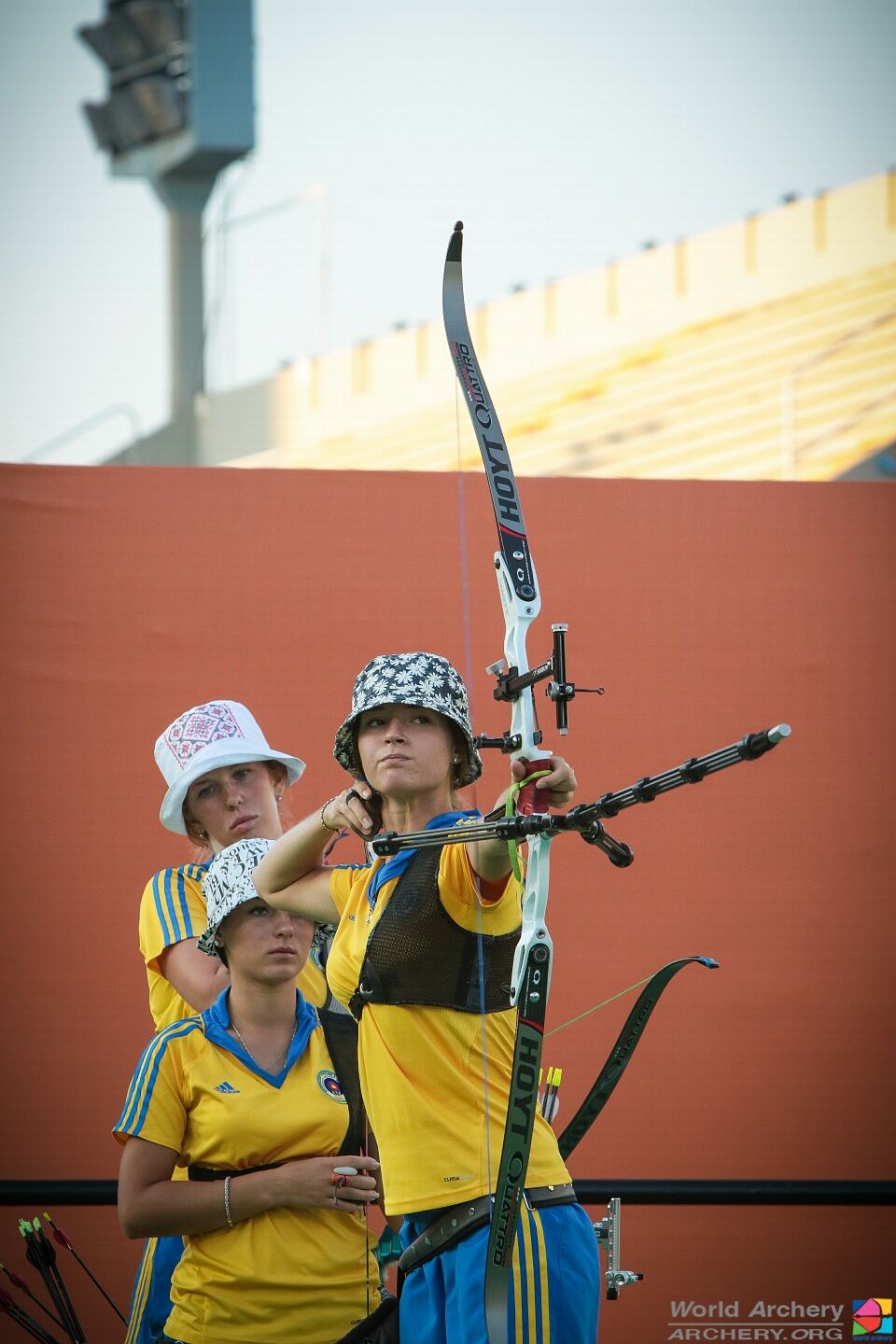
Veronika Marchenko likes to shoot first for Ukraine because that’s “the position she feels most comfortable in”. Anastasia Pavlova shoots second and Lidiia Sichenikova acts as anchor.
“She’s fast and she’s okay to go last,” explained a member of the Ukraine team management. “They try all different combinations but this one they’re feeling comfortable in.”
China 
